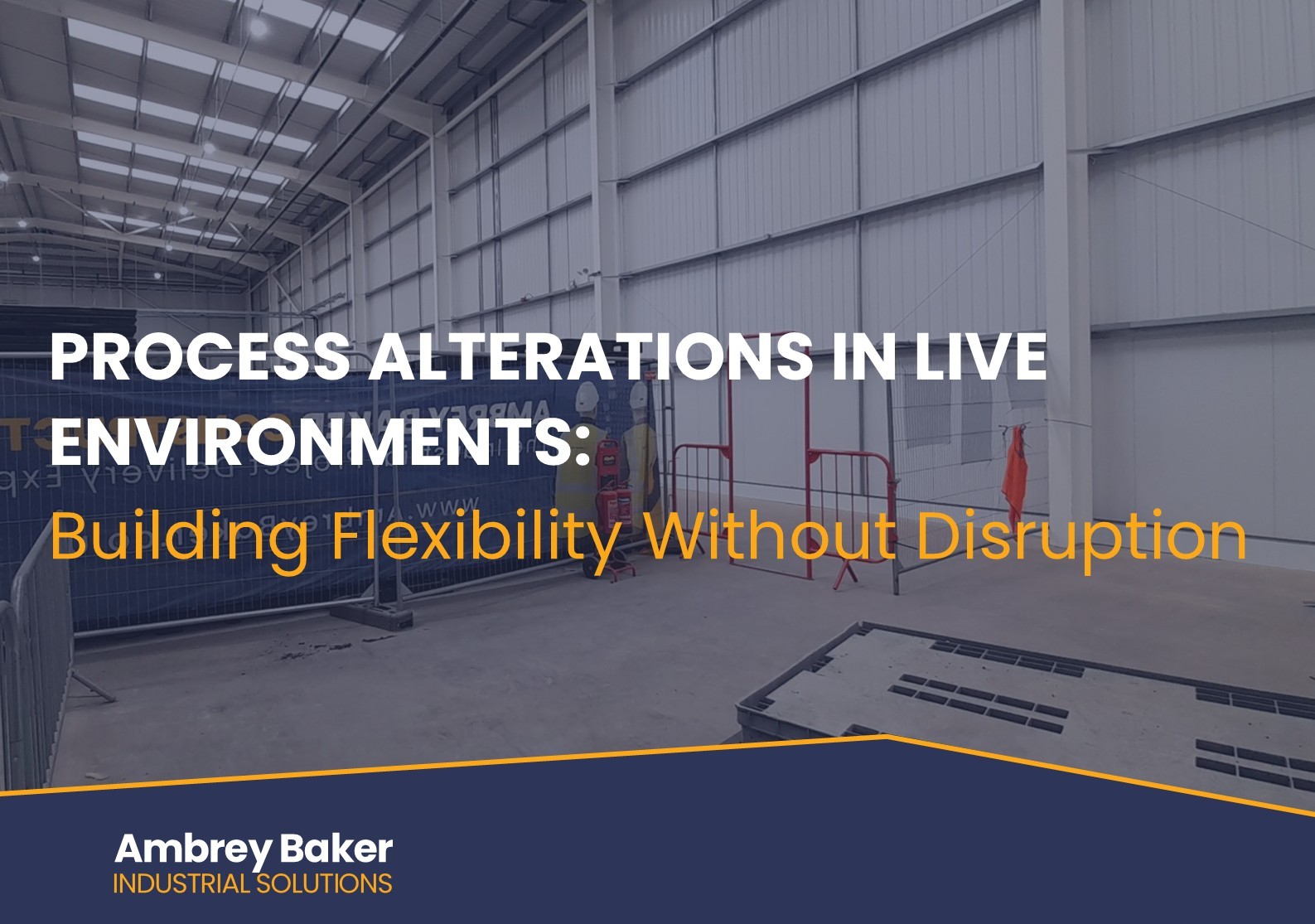Process Alterations in Live Environments, Building Flexibility Without Disruption
Industrial facilities are rarely static. Demand changes, sustainability goals tighten, and automation alters the way businesses operate. For operators in food production, logistics, chemical processing, or advanced manufacturing, the ability to alter processes or install new lines without rebuilding entire facilities is becoming a defining measure of competitiveness. The challenge lies in building flexibility into spaces from the outset, so that upgrades can be achieved efficiently, safely, and with minimal disruption to operations.
One of the main drivers is market demand. Food manufacturers face rapidly changing consumer trends, from plant-based foods to convenience products, requiring them to launch new lines quickly. Logistics hubs must handle fluctuating parcel volumes and adapt to seasonal peaks.
Advanced manufacturers respond to global supply chain pressures by reconfiguring production to handle different components or technologies. Facilities designed with rigid layouts struggle to respond; those with modular services, adaptable utilities, and space for expansion adapt smoothly and stay ahead.
Sustainability is another key factor shaping process alterations. The UK’s Net Zero Strategy calls for energy efficiency and material optimisation across industrial sites. For process operators, this translates into new plant equipment, more efficient refrigeration, heat recovery systems, or clean-in-place technologies. Retrofitting these systems into inflexible layouts is expensive and disruptive. Designing with future upgrades in mind, such as oversizing plant rooms, routing services with spare capacity, or leaving provision for renewable energy connections, reduces long-term costs and ensures compliance with tightening environmental standards.
Automation is reshaping industrial processes at pace. In logistics, robotics and automated storage and retrieval systems are transforming warehouse design. In food and pharmaceutical facilities, automated filling, packing, and handling systems improve productivity but also require precise environmental and hygiene control. Chemical plants increasingly use digital monitoring and control systems that demand new data cabling and infrastructure. Successful process alterations depend on secondary steel structures, mezzanines, and access gantries that can carry new conveyors or robotic systems, as well as hygienic cladding and drainage layouts that support more intensive cleaning regimes. Without flexible planning, the benefits of automation can be undermined by costly retrofits or downtime.
Health and safety compliance is also central to process alterations. The Health and Safety Executive makes clear that duty-holders must review risks whenever new equipment or processes are introduced. This includes ensuring safe access for maintenance, guarding for new machinery, and reassessing fire and chemical hazards. For facilities under the Control of Major Accident Hazards (COMAH) Regulations, any significant alteration must be notified and reviewed to demonstrate ongoing risk management. This regulatory framework underscores that process changes are not simply operational adjustments, they are safety-critical interventions that must be designed and executed properly.
Flexibility also underpins resilience. The Institution of Civil Engineers has highlighted that resilient infrastructure is built by anticipating change and designing for adaptability. In industrial facilities, this means leaving room for new process lines, designing utilities with spare capacity, and building layouts that can evolve. For example, pipe bridges that allow additional services to be added, or modular panel systems that make it easier to expand or reconfigure production spaces. These measures ensure that facilities can respond not only to market shifts but also to unexpected challenges, such as supply chain disruption or regulatory change.
Economics matter too. Well-planned alterations reduce downtime and improve return on investment. A facility that can install a new line in weeks rather than months gains a competitive edge. Conversely, poorly planned upgrades that clash with existing services or require extensive demolition inflate costs and erode margins. Case studies across sectors show that investment in flexible infrastructure, extra service risers, adaptable drainage, or pre-planned expansion space, pays off by shortening project timelines and reducing operational disruption.
At their best, process alterations and new process lines are not afterthoughts but part of a facility’s long-term strategy. They allow businesses to innovate, comply with new regulations, reduce carbon emissions, and meet customer demand without rebuilding from scratch. The cost of flexibility is modest compared to the cost of inflexibility: downtime, wasted space, or lost opportunities.
For owners and operators in food, logistics, chemicals, and advanced manufacturing, the lesson is clear. Flexibility is no longer a bonus; it is a baseline. Facilities must be built with the capacity to change, because change is inevitable. Whether it is new product lines, sustainability upgrades, or automation technologies, those who design for adaptability will stay competitive and resilient in a rapidly evolving industrial landscape.
As a Principal Contractor under the CDM Regulations, Ambrey Baker ensures that process alterations and upgrades are delivered safely, efficiently, and in full compliance with UK health and safety law.











